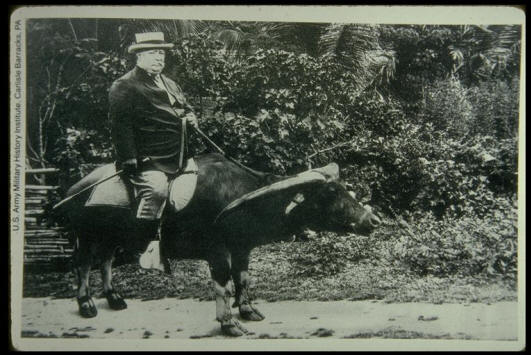The Extreme Leftist-Inspired Toppling of Statues Triggered An Unintended Reckoning Over Nation’s History, From the Native American Perspective
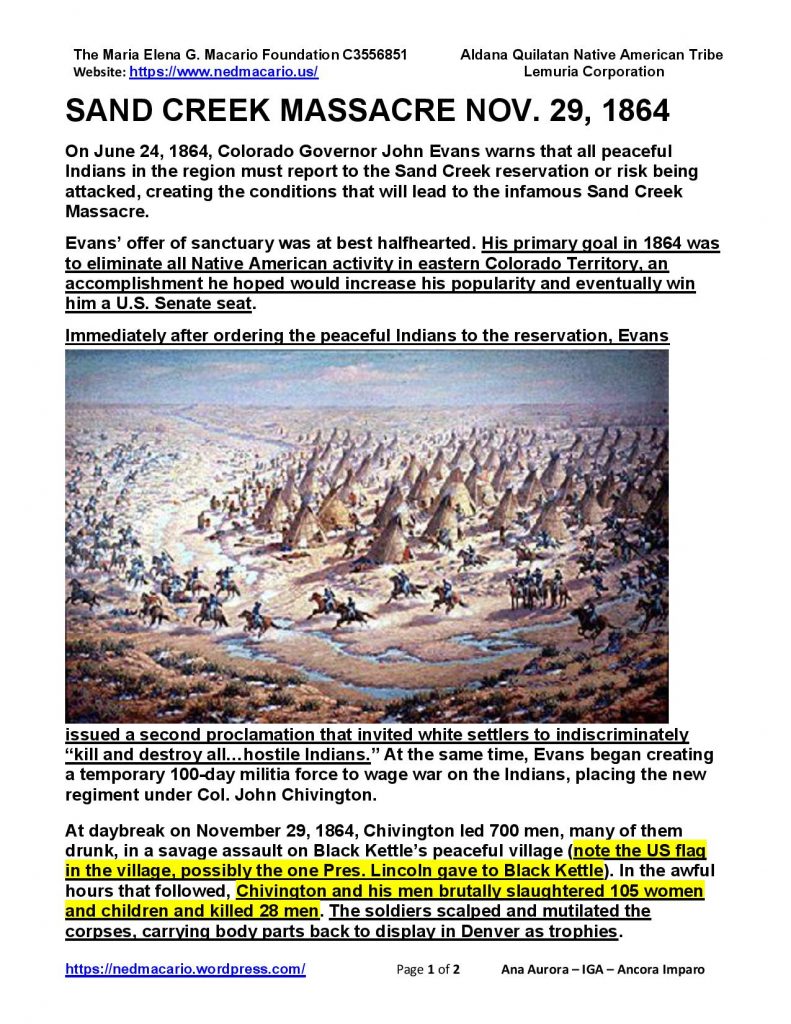
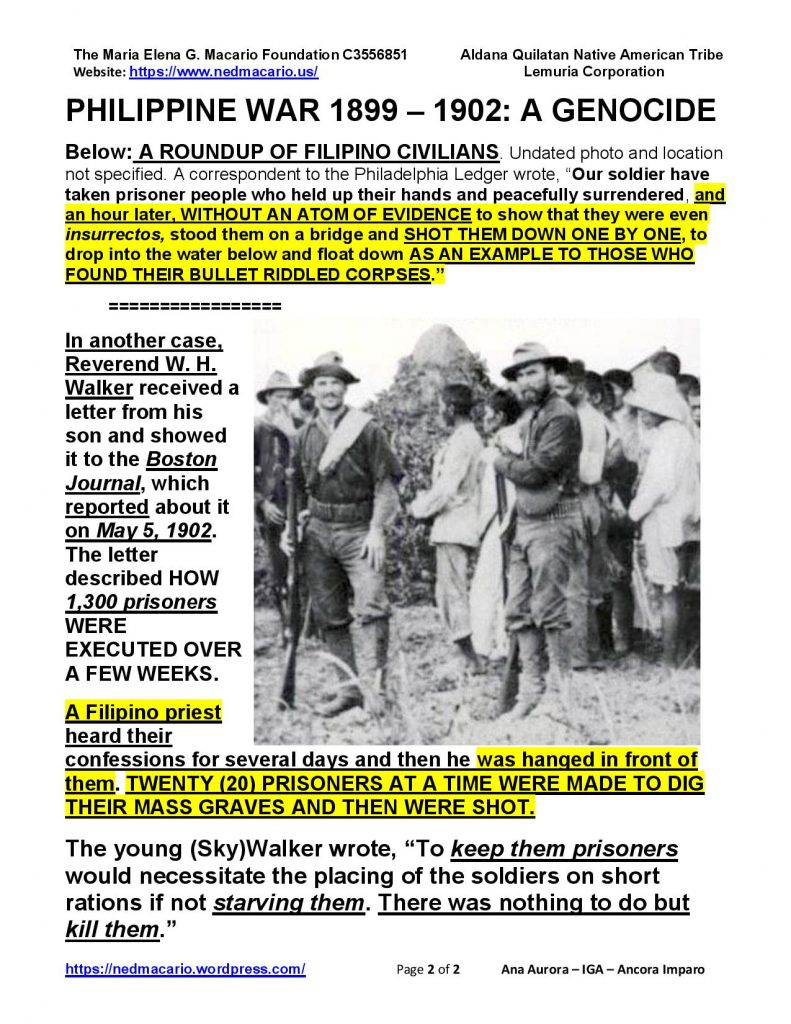
Sand Creek Massacre Nov. 29, 1864 that inspired the massacre scene in the movie “Soldier Blue” (1970) starring Candice Bergen and Peter Strauss.
Philippine War 1899-1902 was in fact the Filipino Genocide 1899-1902
The Filipino genocide 1899-1902 simply called the Philippine War 1899-1902 was America’s first Vietnam. In one estimate, some 34,000 Filipino soldiers died against only 4,000 American troops. However ESTIMATES for CIVILIAN DEATHS go from 1.2 MILLION to THREE (3) MILLION MEN, WOMEN AND CHILDREN and children who died of famine and disease mostly in concentration camps. In 1902 the estimated population of the Philippines was seven (7) million.
I have yet to read an official admission and apology for the genocide of Native Americans including those in the Philippines.
Between January and April of 1902, there were 8,350 deaths out of 298,000. Some camps lost as many as 20% of the population. There was one camp that was two miles by one mile (3.2 by 1.6 km) in area. It was “home” to some 8,000 Filipinos. Men were rounded up for questioning, tortured and summarily executed.
Reverend W. H. Walker received a letter from his son and showed it to the Boston Journal, which reported about it on May 5, 1902. The letter described how 1,300 prisoners were executed over a few weeks. A Filipino priest heard their confessions for several days and then he was hanged in front of them. Twenty prisoners at a time were made to dig their mass graves and then were shot. The young Walker wrote, “To keep them prisoners would necessitate the placing of the soldiers on short rations if not starving them. There was nothing to do but kill them.”
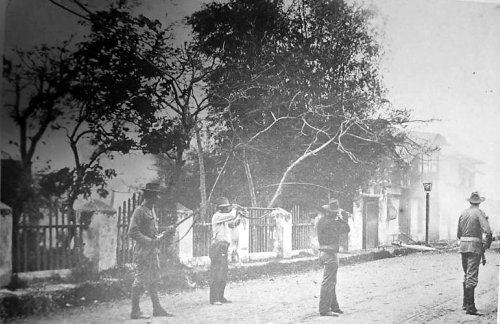
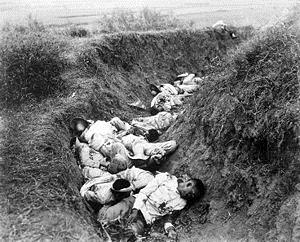
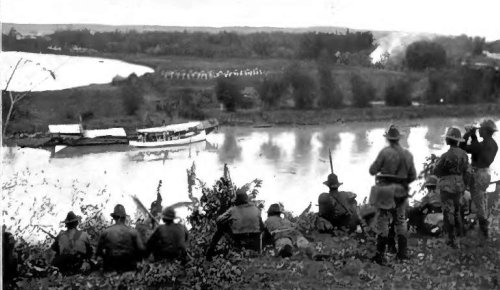
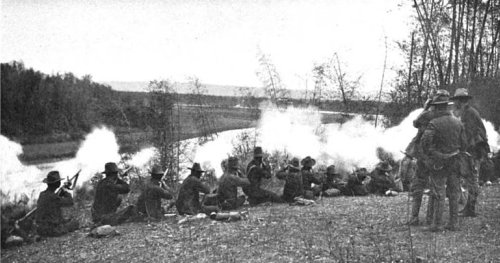
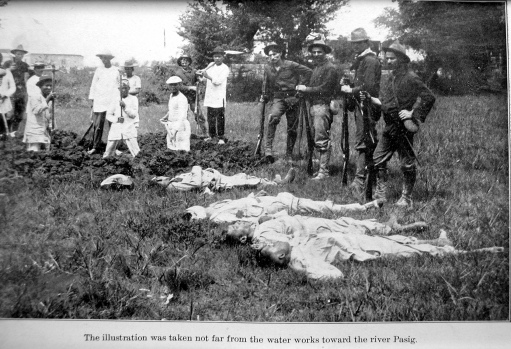
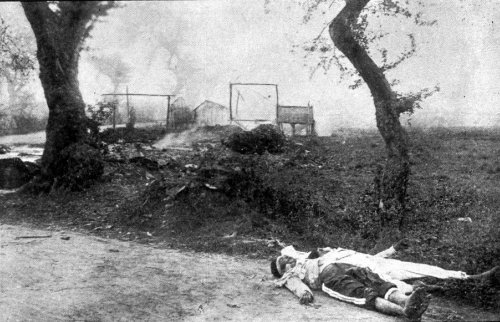
Americans discovered in the Philippines a form of torture what is now called “water boarding”. Notice the U.S. military headgear, the Campaign Hat or the Sun Helmet is made of soft twill cotton. It was also in the Philippines that the U.S. military found the need for a helmet. A new weapon they have never seen before, the yo-yo was effective against the soft Campaign Hat or what we would now call a “bush hat.” Albert Gardner, in Troop B of the 1st U.S. Cavalry, composed a would-be comic song dedicated to “water-cure” torture, sung to the tune of the Battle Hymn of the Republic:
1st Verse
Get the good old syringe boys and fill it to the brim
We’ve caught another nigger and we’ll operate on him
Let someone take the handle who can work it with a vim
Shouting the battle cry of freedom
CHORUS
Hurrah Hurrah We bring the Jubilee
Hurrah Hurrah The flag that makes him free
Shove in the nozzel deep and let him taste of liberty
Shouting the battle cry of freedom”
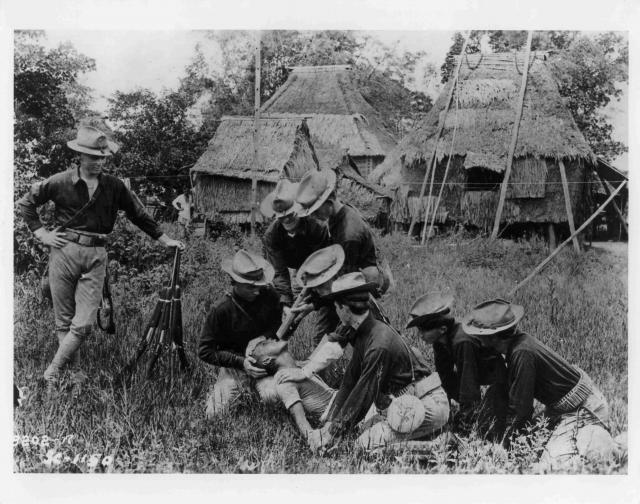
Original caption: “Philippine Islands—A Harmless Method of Torture Alleged to Have Been Occasionally Used by Soldiers in the Philippines as one of the Necessary Accom- paniments of War.” The men belonged to the 35th U.S. Volunteer Infantry Regiment commanded by Col. Edward H. Plummer, West Point Class 1877. The regiment, which mainly operated in Bulacan Province, Luzon Island, arrived in the Philippines on Nov. 6, 1899 and departed on March 15, 1901.
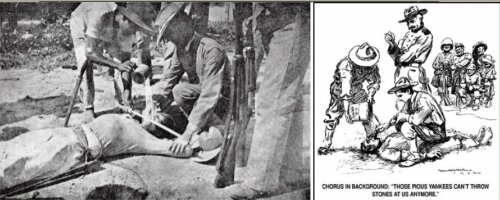
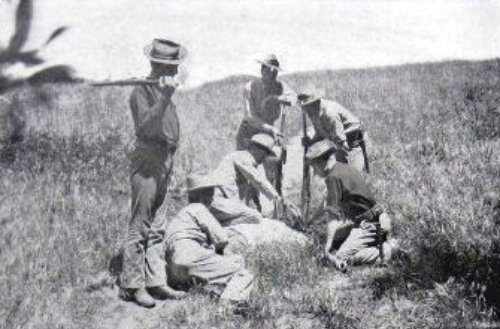
This cure was repeated until the prisoner talked or died. Roughly half the Filipinos given the cure did not survive. How many Filipinos were killed by torture is not known, but the extent of the practice is documented by a letter sent home by a soldier who bragged of inflicting the water cure on 160 Filipinos, 134 of whom died. A Harvard-educated officer, 1st Lt. Grover Flint, testified before the US Senate on the routine torture of Filipino combatants and civilians. He described the “water cure” as standard US Army torture.
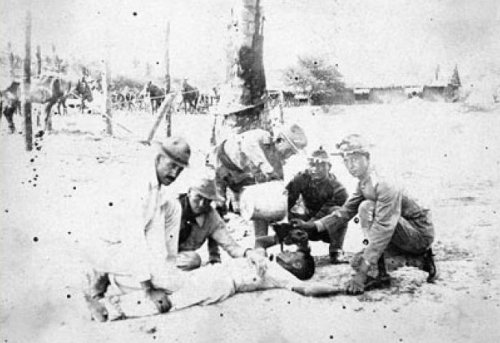
One famous American who opposed the Philippine War was billionaire Andrew Carnegie
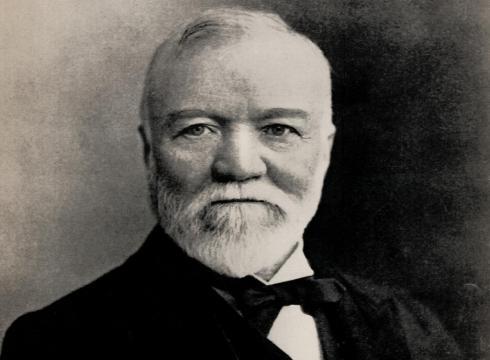
“The severity with which the inhabitants have been dealt would not look well if a complete history of it were written out” –Governor-General of the Philippines, William Howard Taft
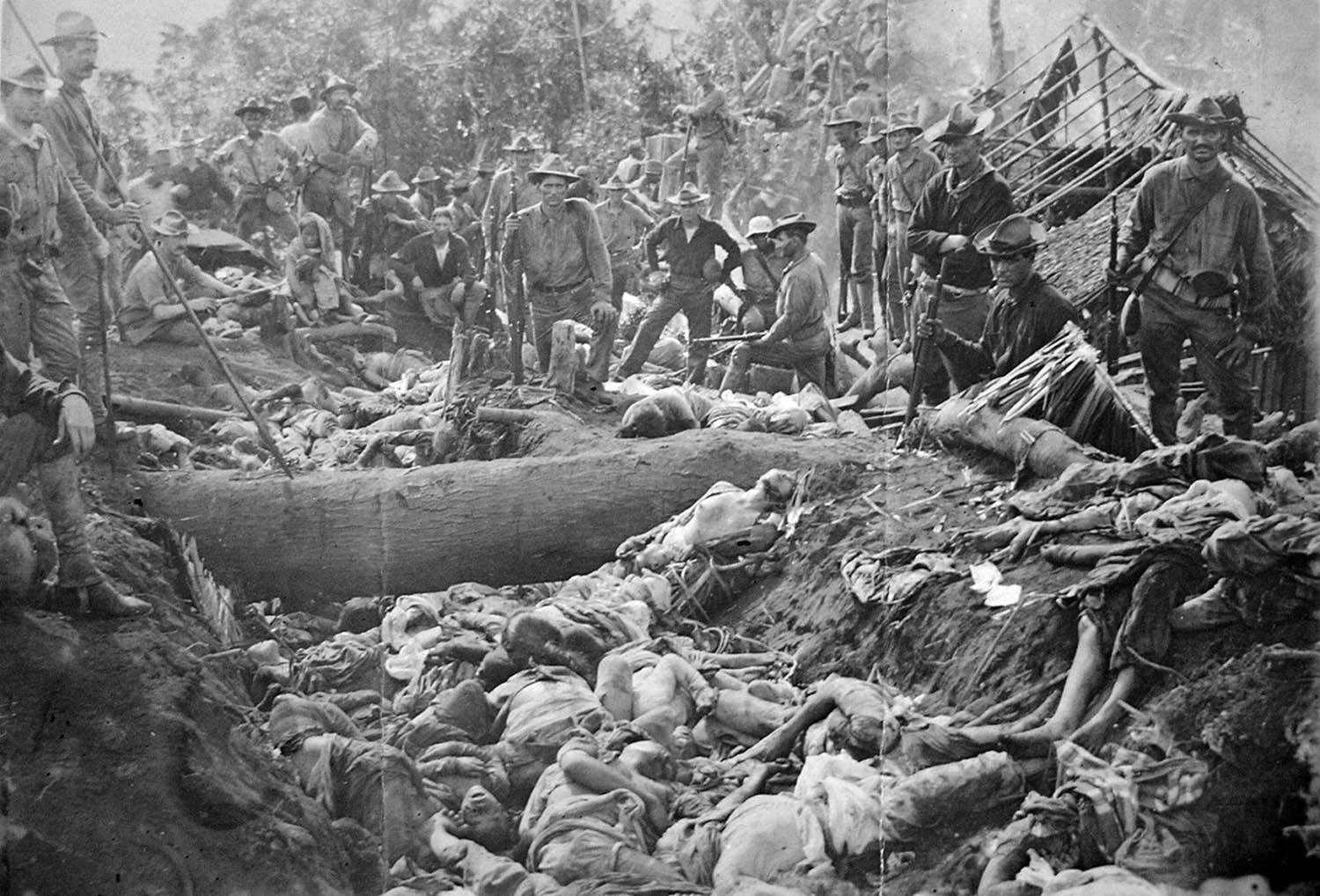 US Soldiers pose with dead Filipino men women & children victims of the Bud Dajo Massacre, March 7, 1906, Jolo, Philippines.
US Soldiers pose with dead Filipino men women & children victims of the Bud Dajo Massacre, March 7, 1906, Jolo, Philippines.
Earlier on Dec. 29, 1890, it was the Massacre of Lakotas at Wounded Knee where 84 men 44 women and 18 children were killed with 51 wounded (7 fatally).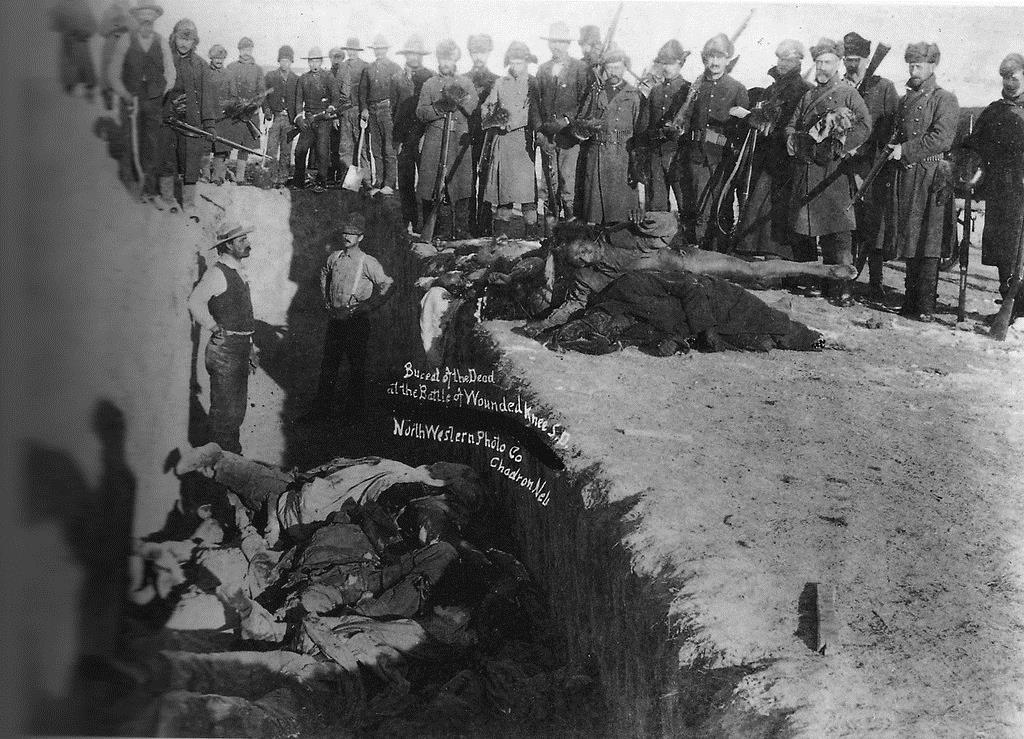 Above: U.S. soldiers pose for a picture near a mass grave of dead Lakotas following the Massacre at Wounded Knee on December 29, 1890.
Above: U.S. soldiers pose for a picture near a mass grave of dead Lakotas following the Massacre at Wounded Knee on December 29, 1890.
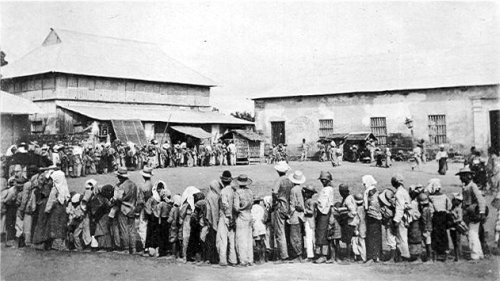
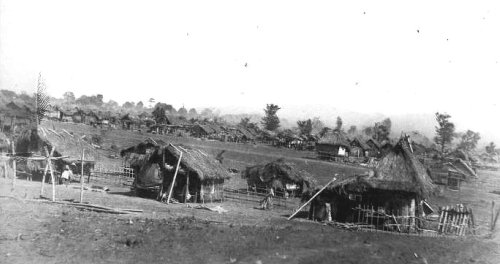
General Bell insisted that he built these camps to “protect friendly natives from the insurgents, assure them an adequate food supply” while teaching them “proper sanitary standards.” The commandant of one of the camps referred to them as the “suburbs of Hell.” Starvation and disease took the lives of thousands. Between January and April of 1902, there were 8,350 deaths out of 298,000. Some camps lost as many as 20% of the population. There was one camp that was two miles by one mile (3.2 by 1.6 km) in area. It was “home” to some 8,000 Filipinos. Men were rounded up for questioning, tortured and summarily executed.
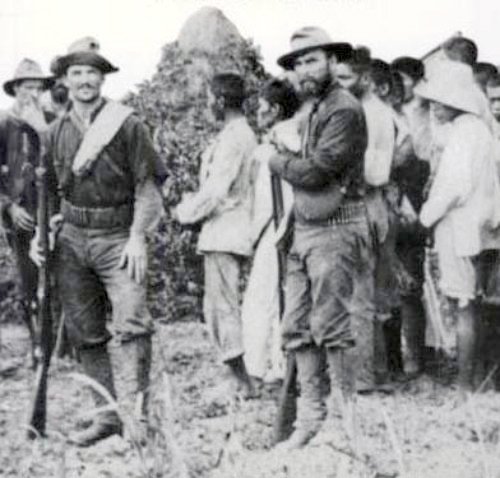
Above: A ROUNDUP OF FILIPINO CIVILIANS. Undated photo and location not specified. A correspondent to the Philadelphia Ledger wrote, “Our soldiers…have taken prisoner people who held up their hands and peacefully surrendered, and an hour later, without an atom of evidence to show that they were even insurrectos, stood them on a bridge and shot them down one by one, to drop into the water below and float down as an example to those who found their bullet riddled corpses.”

Reverend W. H. Walker received a letter from his son and showed it to the Boston Journal, which reported about it on May 5, 1902. The letter described how 1,300 prisoners were executed over a few weeks. A Filipino priest heard their confessions for several days and then he was hanged in front of them. Twenty prisoners at a time were made to dig their mass graves and then were shot. The young Walker wrote, “To keep them prisoners would necessitate the placing of the soldiers on short rations if not starving them. There was nothing to do but kill them.”
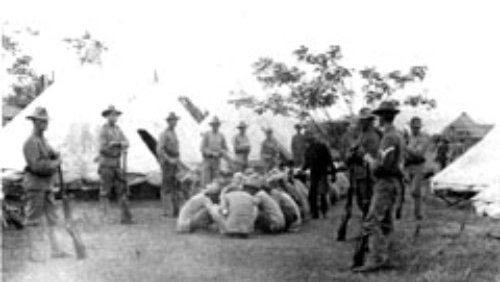
When an American was “murdered” in Batangas, Bell ordered his men to “by lot select a POW–preferably one from the village in which the assassination took place–and execute him.”
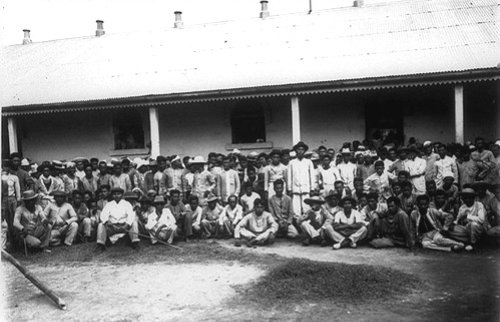
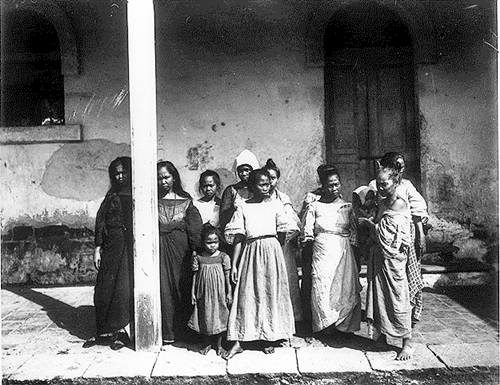
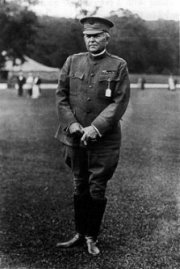 Maj. Gen. J. Franklin Bell said, “It is an inevitable consequence of war that the innocent must generally suffer with the guilty”. He reasoned that since all natives were treacherous, it was impossible to recognize “the actively bad from only the passively so.” Some estimates of civilian deaths on Luzon are as high as 100,000. Many of Malvar’s officers and men gave up and collaborated with the Americans. Malvar realized that continuing the war would harm the people more.
Maj. Gen. J. Franklin Bell said, “It is an inevitable consequence of war that the innocent must generally suffer with the guilty”. He reasoned that since all natives were treacherous, it was impossible to recognize “the actively bad from only the passively so.” Some estimates of civilian deaths on Luzon are as high as 100,000. Many of Malvar’s officers and men gave up and collaborated with the Americans. Malvar realized that continuing the war would harm the people more.
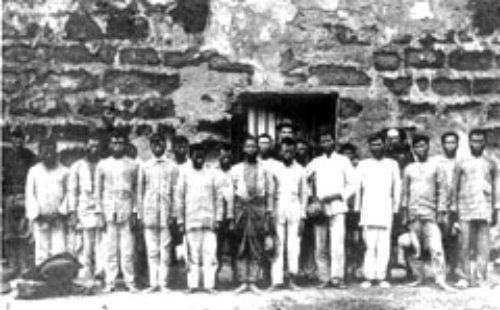
On April 16, 1902, Malvar and his entire command surrendered to the Americans, who treated him honorably. General Bell reported that during the campaign against Malvar, US forces secured 3,561 guns and 625 revolvers, captured, or forced to surrender some eight or ten thousand “insurgents”. Malvar’s surrender marked the end of organized resistance in the Philippines against American occupation. To deal with other rebels and insurrectionists, the Philippine Commission passed the Brigandage Act of 1902 which interpreted all acts of armed resistance to American rule as banditry.
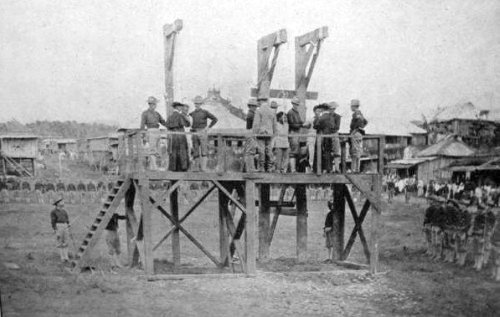
My great grandfather Nicolas Aldana, a husband to a landowner was executed on Dec. 12, 1901 eleven months prior to the enactment of the Brigandage Act of 1902. It should be noted that during the Spanish Regime and before the Americans came, only full-blooded Spaniards were allowed to own land in the Philippines. Mestizos or half-Spanish and usually half-Chinese could only lease the lands from the Dominican Order.
